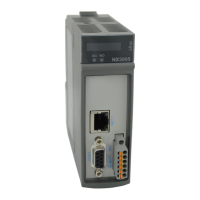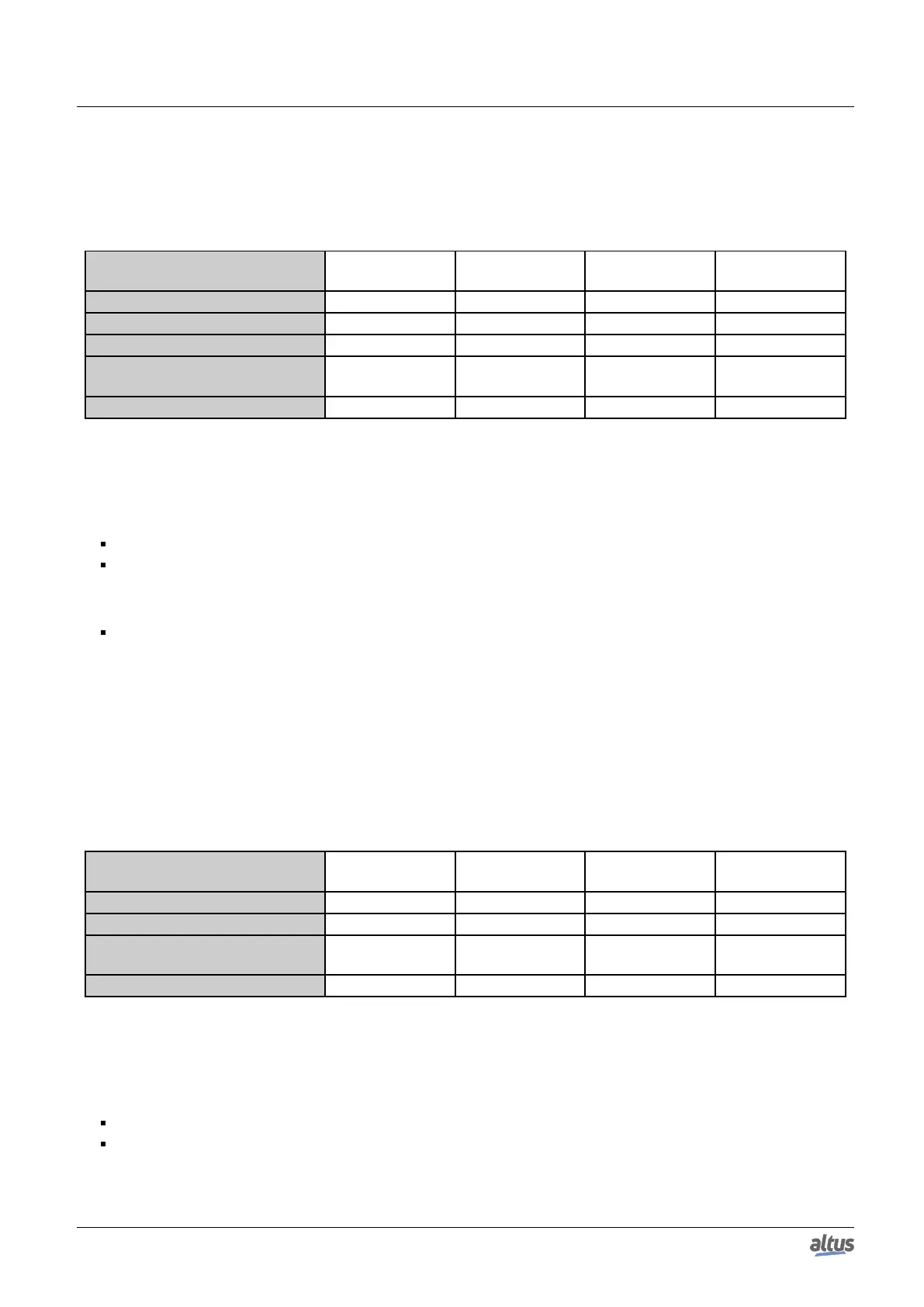5. CONFIGURATION
devices of communication protocol IEC 60870-5-104 Server (does not include master or clients from MODBUS RTU Slave,
MODBUS Server and DNP3 Server protocols).
The limitations of the MODBUS protocol for Direct Representation and symbolic mapping for the CPUs can be seen in
Tables 66 and 67, respectively.
Limitations
MODBUS RTU
Master
MODBUS RTU
Slave
MODBUS
Ethernet Client
MODBUS
Ethernet Server
Mappings per instance 128 32 128 32
Devices per instance 64 1
(1)
64 64
(2)
Mappings per device 32 32 32 32
Simultaneous requests per in-
stance
- - 128 64
Simultaneous requests per device - - 8 64
Table 66: MODBUS Protocol Limitations for Direct Representation
Notes:
Devices per instance:
Master or Client Protocols: number of slaves or server devices supported by each Master or Slave protocol instance.
MODBUS RTU Slave Protocol: the limit
(1)
informed relates to serial interfaces that do not allow a Slave to establish
communication through the same serial interface, simultaneously, with more than one Master device. It’s not necessary,
nor is it possible to declare or configure the Master device in the instance of the MODBUS RTU slave protocol. The
master device will have access to all the mappings made directly on the instance of MODBUS RTU slave protocol.
MODBUS RTU Server Protocol: the limit
(2)
informed relates to the Ethernet interfaces, which limit the number of
connections that can be established with other devices through a single Ethernet interface. It is not necessary, nor is it
possible to declare or configure Clients devices in the instance of the MODBUS Server protocol. All Clients devices
will have access to all the mappings made directly in the instance of the MODBUS Server protocol.
Mappings per device: The maximum number of mappings per device, despite being listed above, is also limited by the
protocol maximum number of mappings. Also to be considered the maximum CPU mappings as in Table 65.
Simultaneous Requests per Instance: Number of requests that can be simultaneously transmitted by each Client protocol
instance or that can be received simultaneously by each Server protocol instance. MODBUS RTU protocol instances, Master
or Slave, do not support simultaneous requests.
Simultaneous Requests per Device: Number of requests that can be simultaneously transmitted to each MODBUS Server
device, or may be received simultaneously by each MODBUS client device. MODBUS RTU devices, Master or Slave, do not
support simultaneous requests.
Limitations
MODBUS RTU
Master
MODBUS RTU
Slave
MODBUS
Ethernet Client
MODBUS
Ethernet Server
Devices per instance 64 1
(1)
64 64
(2)
Requests per device 32 - 32 -
Simultaneous requests per in-
stance
- - 128 64
Simultaneous requests per device - - 8 64
Table 67: MODBUS Protocol Limitations for Symbolic Mappings
Notes:
Devices per instance:
Master or Client Protocol: Number of slave or server devices supported by each Master or Client protocol instance.
MODBUS RTU Slave Protocol: the limit
(1)
informed relates to serial interfaces that do not allow a Slave to establish
communication through the same serial interface, simultaneously, with more than one Master device. It’s not necessary,
nor is it possible to declare or configure the Master device in the instance of the MODBUS RTU slave protocol. The
master device will have access to all the mappings made directly on the instance of MODBUS RTU slave protocol.
95

